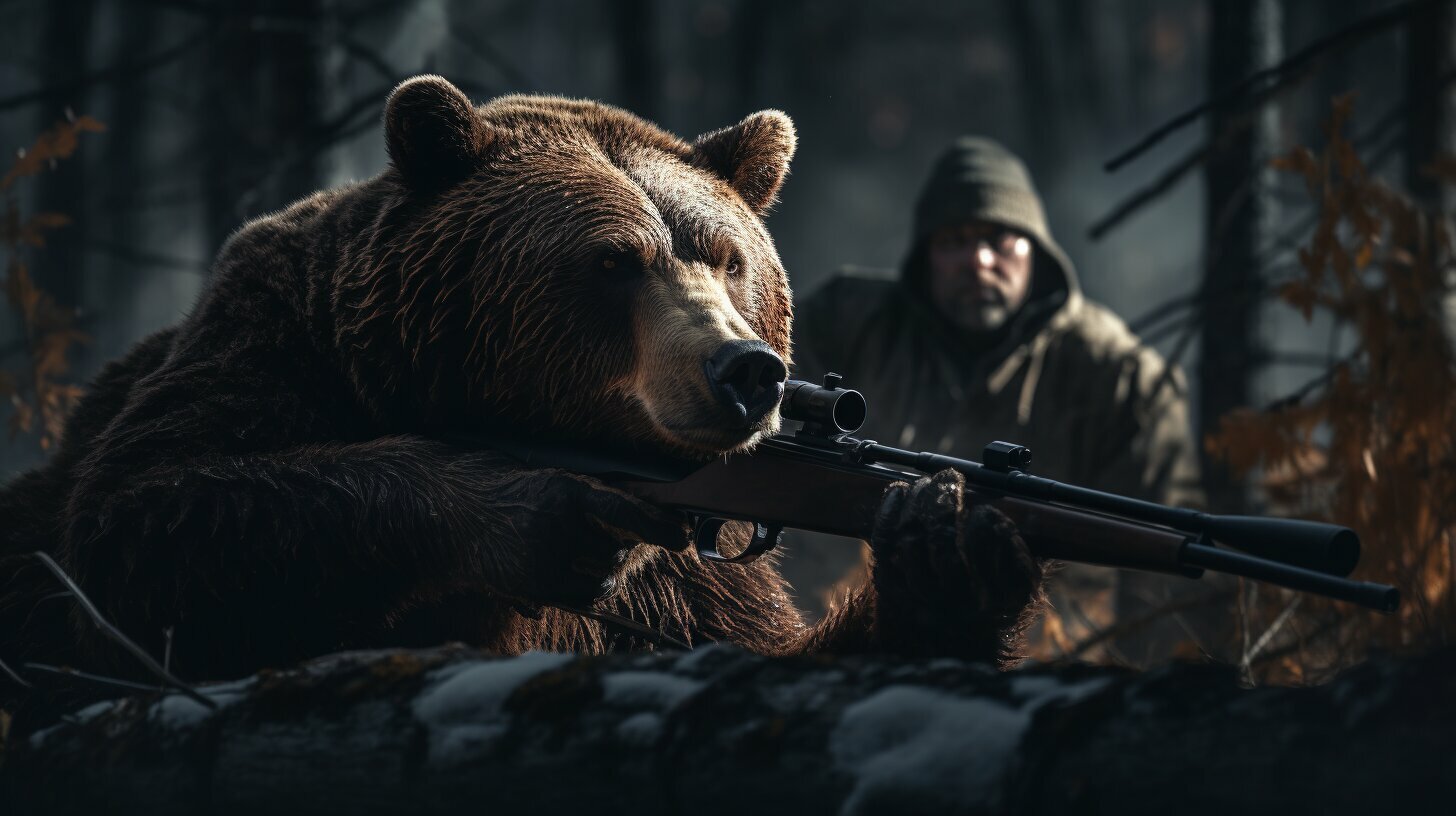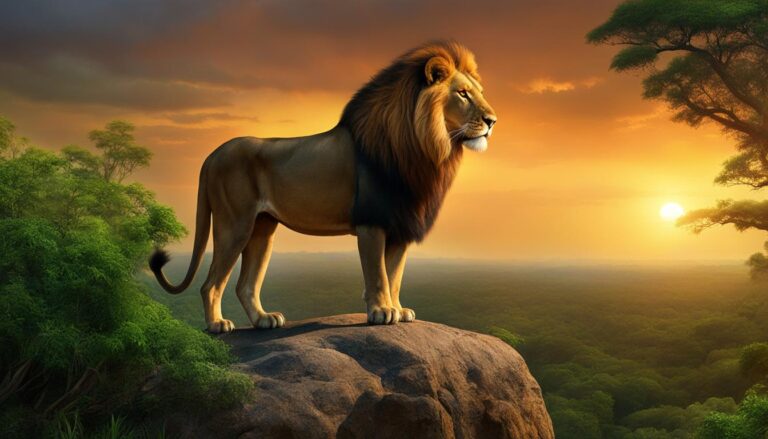Uncovering the Reasons: Why Do People Hunt Bears?
Bear hunting has been a popular and contentious practice for many years, with people pursuing these magnificent creatures for a multitude of reasons. Some individuals are drawn to the thrill and adventure that bear hunting offers, relishing the challenge of testing their skills and knowledge in pursuit of these formidable animals. Others are enticed by the culinary delights of bear meat, appreciating its lean and delicious qualities. Bear fat and hide also hold practical value, with the fat being rendered into oil and the hide prized for its luxurious and versatile qualities.
However, the decision to hunt bears is not without controversy. Critics argue that it goes against the principles of fair chase and compassionate wildlife management. The recent rule change in Alaska, for example, allowing the hunting of nursing mothers and their cubs in national preserves, has sparked widespread concern among scientists, wildlife managers, and animal advocates who fear it undermines the conservation mission of the National Park Service.
Key Takeaways:
- People hunt bears for various reasons, including the thrill of the chase and the opportunity to test their skills.
- Bear meat is highly valued for its taste and nutritional value.
- Bear fat can be rendered into oil, while the hide is prized for its luxurious qualities.
- The decision to hunt bears is controversial, with critics raising ethical concerns and arguing against fair chase principles.
- Recent rule changes allowing the hunting of nursing mothers and cubs have drawn criticism and sparked concerns about wildlife conservation.
The Thrill and Adventure of Bear Hunting
For many hunters, the thrill and adventure of bear hunting are unparalleled, with the challenge of tracking and outsmarting these elusive animals providing a unique sense of achievement. It requires careful planning, patience, and a deep understanding of bear behavior and habitat. Being able to successfully navigate the rugged terrain and anticipate the movements of these powerful creatures adds to the excitement of the hunt.
One of the reasons why bear hunting is so captivating is the element of danger involved. Bears are known for their strength and agility, making them formidable opponents. The adrenaline rush that comes from being in close proximity to such a formidable predator can be both exhilarating and humbling. It pushes hunters to test their skills, instincts, and ability to make split-second decisions. The challenge of a fair chase is an integral part of the experience, where hunters aim to match their wit and cunning against the bear’s natural instincts.
Aside from the thrill, bear hunting also serves as a crucial wildlife management tool. By carefully regulating the bear population, hunting helps maintain a healthy balance between predator and prey, as well as preserves the integrity of the ecosystem. It mitigates the risk of overpopulation and reduces conflicts between bears and humans. When done responsibly and in accordance with conservation guidelines, bear hunting can contribute to the long-term sustainability of bear populations, ensuring their survival for future generations to appreciate and admire.
| Benefits of Bear Hunting |
|---|
| 1. Thrilling and adventurous experience |
| 2. Test of skill, knowledge, and instincts |
| 3. Crucial wildlife management tool |
| 4. Maintains healthy balance in ecosystems |
The Culinary Delights of Bear Meat
Beyond the hunt itself, the appeal of bear hunting extends to the delectable rewards it provides, as bear meat offers a lean and delicious source of sustenance. Whether cooked into hearty stews, grilled to perfection, or smoked to enhance its natural flavors, bear meat is highly regarded for its taste and versatility in various culinary preparations.
When it comes to nutritional value, bear meat is packed with essential nutrients. It is a rich source of protein, which is vital for muscle repair and growth. Bear meat is also low in fat, particularly saturated fat, making it a healthy choice for those conscious of their dietary intake. Additionally, it is a good source of vitamins and minerals, including iron, zinc, and vitamin B12.
For centuries, indigenous cultures have prized bear meat for its ability to sustain and nourish the body. Its unique flavor and texture, reminiscent of wild game, adds a distinctive element to dishes and contributes to a memorable dining experience. The popularity of bear meat has also spread to modern food enthusiasts and adventurous eaters seeking novel culinary experiences.
Table: Nutritional Value of Bear Meat (per 100g)
| Nutrient | Amount |
|---|---|
| Protein | 23g |
| Calories | 147 |
| Total Fat | 3g |
| Saturated Fat | 1g |
| Iron | 2.6mg |
| Zinc | 4.3mg |
| Vitamin B12 | 2.5mcg |
Despite its culinary appeal, it is important to note that bear hunting and consumption must adhere to legal and ethical guidelines. Responsible hunting practices, including adherence to local hunting regulations and conservation efforts, are crucial in maintaining a sustainable balance between human interests and wildlife welfare. It is also vital to respect and honor the cultural traditions surrounding bear hunting, acknowledging the deep-rooted connections that indigenous communities have with this practice.
Utilizing the Benefits of Bear Fat and Hide
In addition to its meat, bears offer valuable resources in the form of their fat, which can be rendered down into a softer and more digestible oil, as well as their luxurious hides, highly sought after for their versatility. The fat of a bear is rich in calories and nutrients, making it a valuable source of energy for cooking and baking.
Rendering bear fat involves a process of melting and filtering, resulting in a pure and flavorful oil that can be used in various culinary preparations. This bear oil has a lower melting point than lard, making it ideal for creating tender and moist pastries. It can also be used for frying, sautéing, or as a base for flavorful dressings and sauces.
Furthermore, the hide of a black bear is prized for its exquisite qualities. Bear hides are used to create luxurious fur garments, rugs, and accessories. The soft and dense fur, known for its insulating properties, provides warmth and comfort in colder climates. The durability of bear hide also makes it suitable for crafting leather goods, such as bags, belts, and shoes. The unique and natural patterning of bear fur adds a touch of elegance and sophistication to any design.
As hunters responsibly utilize the resources provided by bears, the economic benefits of bear hunting become apparent. The trade and sale of bear fat, oil, and hides contribute to local economies, supporting small businesses and artisans. This sustainable use of bear resources also promotes conservation efforts, as hunters become invested in the protection and preservation of bear populations and their habitats.
| Bear Fat | Bear Hide |
|---|---|
| – Rich in calories and nutrients | – Prized for its exquisite qualities |
| – Renders down into a softer and more digestible oil | – Used to create luxurious fur garments, rugs, and accessories |
| – Ideal for cooking, baking, frying, and sautéing | – Provides warmth and comfort in colder climates |
| – Used as a base for dressings and sauces | – Suitable for crafting leather goods |
| – Supports local economies and small businesses | – Contributes to conservation efforts |
The Controversy Surrounding Bear Hunting
While bear hunting has its proponents, it also faces significant criticism, with concerns raised about the ethics of pursuing these magnificent creatures and whether hunting practices align with the principles of compassionate wildlife management.
Opponents argue that bear hunting goes against the principles of fair chase, emphasizing the need for ethical hunting practices that prioritize the welfare and conservation of bear populations. Wildlife advocates and scientists express concerns about the impact of bear hunting on bear populations, particularly when hunting regulations are not adequately enforced or when unsustainable hunting practices are employed.
A recent rule change in Alaska allowing the hunting of nursing mothers and their cubs in national preserves has drawn significant backlash. Critics, including scientists, wildlife managers, and animal advocates, argue that this rule not only undermines the conservation mission of the National Park Service but also poses a significant risk to bear populations.
| Key Concerns | Counterarguments |
|---|---|
| Hunting practices may lead to overhunting and endanger bear populations. | Proponents of bear hunting argue that regulated hunting can actually contribute to population management and ensure the overall health and balance of bear populations. |
| Ethical concerns arise when hunting methods are not consistent with fair chase principles. | Hunters who support bear hunting argue that responsible and ethical hunting practices are essential for maintaining a sustainable and respectful approach to wildlife management. |
| Allowing the hunting of nursing mothers and their cubs disrupts the natural balance and threatens bear populations. | Supporters argue that hunting regulations are put in place to ensure sustainable hunting practices and that proper management can mitigate any negative impacts on bear populations. |
It is crucial to strike a balance between human interests, traditions, and the welfare of wildlife when considering bear hunting regulations. By promoting responsible hunting practices, enforcing stringent regulations, and prioritizing sound wildlife management principles, we can navigate the controversial landscape surrounding bear hunting and work towards a future that safeguards both bear populations and the integrity of the hunting tradition.
Bears and Wildlife Conservation
Contrary to popular belief, bear hunting can be seen as a tool for wildlife conservation, as it helps regulate bear populations, preventing overpopulation and potential ecological imbalances. By carefully managing hunting seasons and quotas, wildlife officials can ensure that bear populations remain healthy and in balance with their habitats. This is crucial for maintaining the overall biodiversity and ecological integrity of the ecosystems in which bears reside.
One of the key reasons for managing bear populations through hunting is to minimize conflicts between bears and humans. As bear numbers increase, their natural food sources may become scarce, leading them to venture into human-populated areas in search of food. This can result in property damage, livestock depredation, and even threats to human safety. Hunting helps to control bear numbers, reducing the likelihood of such conflicts and promoting coexistence between bears and humans.
In addition to population management, bear hunting also generates revenue that can be invested in conservation efforts. License fees, permits, and taxes associated with bear hunting contribute to funding wildlife management programs, habitat conservation projects, and research initiatives. This financial support is crucial for the sustainability of these conservation efforts and ensures the long-term protection of bear populations and their habitats.
| Benefits of Bear Hunting for Wildlife Conservation |
|---|
| Balancing bear populations to prevent overpopulation and ecological imbalances |
| Minimizing conflicts between bears and humans |
| Generating revenue for conservation efforts |
It is important to note that bear hunting for conservation purposes must be carefully regulated and managed. Wildlife agencies set strict guidelines to ensure sustainable harvest levels and to avoid negative impacts on bear populations. These regulations include hunting seasons, bag limits, and restrictions on hunting methods to ensure that hunting does not pose a threat to the long-term viability of bear populations.
By considering the ecological, social, and economic aspects of bear hunting, wildlife conservationists can work towards finding a balance between the interests of humans and the welfare of bears. Through responsible management practices, bear hunting can contribute to the conservation of these magnificent creatures and the preservation of their habitats for future generations.
Cultural Traditions and Bear Hunting
Bear hunting is deeply rooted in cultural traditions, with various communities and indigenous groups embracing this practice as part of their heritage and identity. Across different regions of the world, such as North America, Europe, and parts of Asia, bear hunting has been passed down through generations, forming an integral part of these communities’ cultural tapestry.
In Native American cultures, for example, the bear holds significant spiritual and symbolic importance. The bear is often revered as a powerful and wise creature, embodying qualities such as strength, courage, and resilience. Hunting the bear is seen as a way to honor and connect with ancestral traditions, ensuring the continuity of cultural values and teachings.
The rituals and ceremonies associated with bear hunting vary among different cultures. For some, the hunt is a communal activity that brings the community together, fostering a sense of unity and shared purpose. Others view it as a rite of passage, marking the transition from adolescence to adulthood. In these instances, bear hunting becomes a means of personal growth, self-discovery, and proving oneself within the community.
While cultural traditions surrounding bear hunting may differ, they often share common themes of respect, gratitude, and sustainability. Many indigenous communities have long-standing practices that emphasize responsible hunting, ensuring the preservation of bear populations and their habitats for future generations.
The Role of Cultural Traditions in Conservation
Bear hunting, when conducted in accordance with cultural traditions and ethical principles, can play a role in wildlife conservation efforts. These cultural practices often include strict guidelines and protocols that promote sustainable harvests and the protection of bear populations. By adhering to these traditions, indigenous communities have historically demonstrated a deep understanding of the delicate balance between human needs and the preservation of wildlife.
Moreover, cultural traditions surrounding bear hunting can contribute to the conservation of entire ecosystems. Indigenous practices that interconnectedly link hunting, spiritual beliefs, and natural resource management help maintain the ecological integrity of their lands. This holistic approach recognizes the interconnectedness of all living beings and reinforces the importance of maintaining healthy habitats for bears and other wildlife.
As we navigate the complexities surrounding bear hunting, it is crucial to respectfully engage with and learn from the diverse cultural perspectives that underpin these traditions. By doing so, we can foster dialogue, understanding, and collaboration between different communities, working towards a future where the conservation of bears and their habitats is harmoniously integrated with cultural heritage.
| Cultural Traditions and Bear Hunting |
|---|
| Bear hunting is deeply rooted in cultural traditions, with various communities and indigenous groups embracing this practice as part of their heritage and identity. |
| In Native American cultures, bear hunting is seen as a way to honor and connect with ancestral traditions, ensuring the continuity of cultural values and teachings. |
| Across different cultures, bear hunting rituals and ceremonies serve as a means of personal growth, self-discovery, and proving oneself within the community. |
| When conducted in accordance with cultural traditions and ethical principles, bear hunting can contribute to wildlife conservation efforts and the protection of entire ecosystems. |
The Future of Bear Hunting
As human populations continue to expand and encroach upon bear habitats, the management of human-bear conflicts becomes increasingly important, shaping the future of bear hunting practices. Finding a balance between the needs of communities and the preservation of bear populations is crucial for both wildlife conservation and human safety.
One approach to managing human-bear conflicts is through the implementation of hunting regulations that prioritize safety and sustainability. By setting specific seasons, bag limits, and areas where bear hunting is allowed, wildlife management agencies can help control bear populations while minimizing negative interactions between bears and humans.
Furthermore, advancements in technology and research have the potential to revolutionize bear hunting practices. GPS tracking collars and other monitoring devices allow scientists and wildlife managers to gather valuable data on bear movements and behavior, which can inform hunting regulations and help mitigate conflict situations.
| Methods for Human-Bear Conflict Management | Advantages |
|---|---|
| Education and Awareness Campaigns | Helps communities understand bear behavior and how to minimize attractants, reducing potential conflicts. |
| Non-lethal Deterrents | Options such as bear-resistant containers and electric fences can help prevent bears from accessing human food sources, reducing conflicts. |
| Relocation | In cases where conflicts arise, bears can be safely captured and relocated to areas with less human activity, reducing the need for lethal control. |
| Lethal Control | As a last resort, when human safety is at risk, targeted removal of problem bears may be necessary to protect communities. |
However, it is important to note that bear hunting will always be a subject of controversy and debate. While some argue that hunting can help regulate bear populations and reduce conflicts, critics question the ethics of killing animals for sport or trophy purposes. Balancing the interests of hunters, conservationists, and animal welfare advocates will be a key challenge in shaping the future of bear hunting.
Conclusion
Factual data suggests that people hunt bears for a variety of reasons. For some, the thrill and adventure of bear hunting provide a unique challenge, allowing them to test their skills and knowledge in pursuit of these majestic animals. Others find satisfaction in the taste and nutritional value of bear meat, which is known to be lean and delicious. Furthermore, bear fat can be rendered down into oil, offering a softer alternative to lard and easier digestion.
The hide of a black bear is highly valued for its luxurious and versatile qualities, making it desirable for various purposes. Importantly, bears are free of Chronic Wasting Disease (CWD), a prion disease that affects deer populations. This makes bear hunting a safer option for those concerned about CWD transmission.
However, it is crucial to acknowledge that the decision to hunt bears is a contentious one. Critics argue that bear hunting goes against principles of fair chase and compassionate wildlife management. The recent rule change in Alaska, allowing the hunting of nursing mothers and their cubs in national preserves, has drawn significant criticism from scientists, wildlife managers, and animal advocates. They fear that such practices set a dangerous precedent and undermine the conservation mission of the National Park Service.
As wildlife conservation efforts continue to evolve, the future of bear hunting remains uncertain. The ongoing dialogue surrounding this issue emphasizes the need for a careful and balanced approach that considers both human interests and the welfare of these magnificent creatures. Moving forward, it is essential to foster open discussions and explore alternative strategies for managing human-bear interactions.
FAQ
Why do people hunt bears?
People hunt bears for various reasons, including the challenge and adventure it offers, the taste and nutritional value of bear meat, the practical uses of bear fat and hide, and cultural traditions associated with bear hunting.
How is bear meat utilized?
Bear meat is valued for its lean and delicious qualities. It can be cooked and enjoyed as a culinary delight, providing a source of sustenance and nutrition for hunters.
What are the benefits of bear fat and hide?
Bear fat can be rendered down into oil, which is softer than lard and easier to digest. The hide of a black bear is highly valued for its luxurious and versatile qualities, providing economic benefits to hunters.
Is bear hunting controversial?
Yes, the decision to hunt bears is a controversial one, with critics arguing against the principles of fair chase and compassionate wildlife management. Recent rule changes in Alaska allowing the hunting of nursing mothers and their cubs in national preserves have drawn particular criticism.
Does bear hunting contribute to wildlife conservation?
Bear hunting can play a role in wildlife conservation efforts by helping to manage bear populations. However, it is important to balance hunting with conservation goals and ensure sustainable practices are in place.
Are there cultural traditions associated with bear hunting?
Yes, bear hunting has cultural significance and historical traditions in various communities. It is often intertwined with cultural practices, customs, and folklore.
What does the future hold for bear hunting?
The future of bear hunting will likely involve ongoing discussions on hunting regulations, human-bear conflict management, and the evolving approaches to wildlife conservation. It will require careful consideration of human interests and the welfare of bear populations.
Can bear hunting be considered ethical?
The ethics of bear hunting are a subject of debate. Some argue that it goes against principles of fair chase, while others believe it can be conducted ethically with proper regulations and considerations for the well-being of bears.






